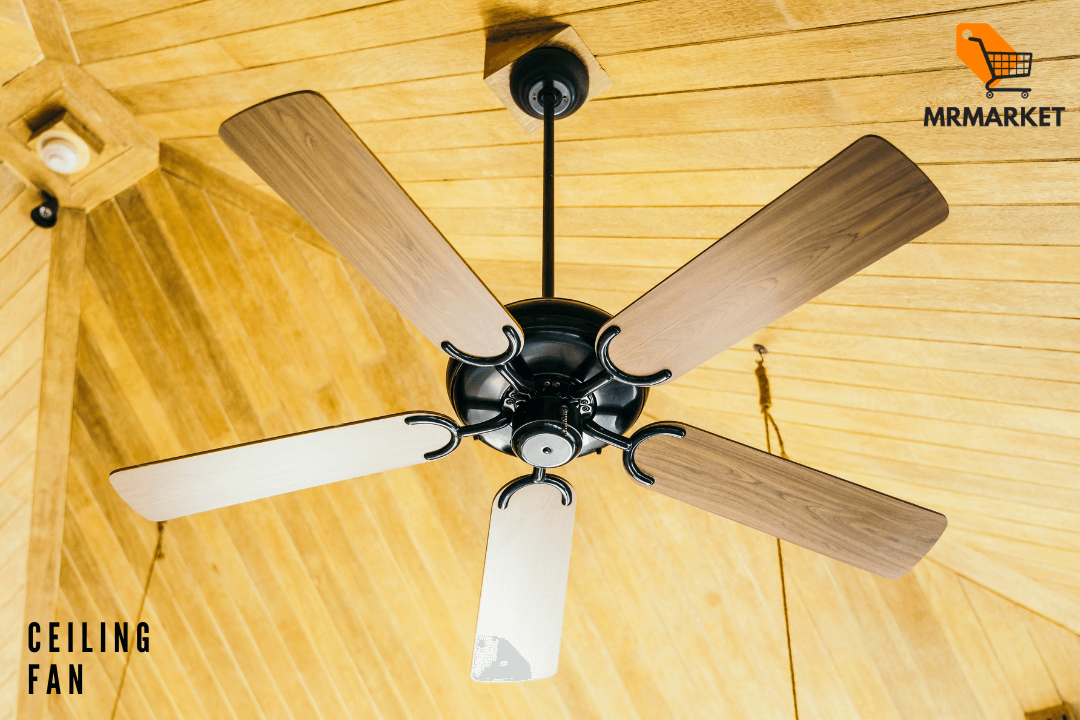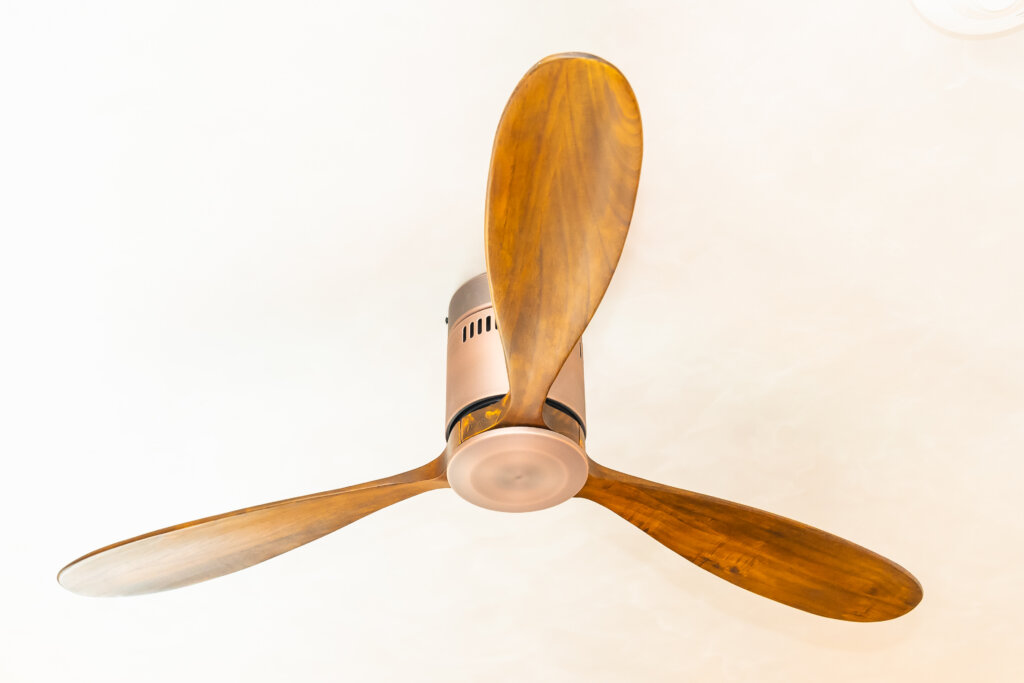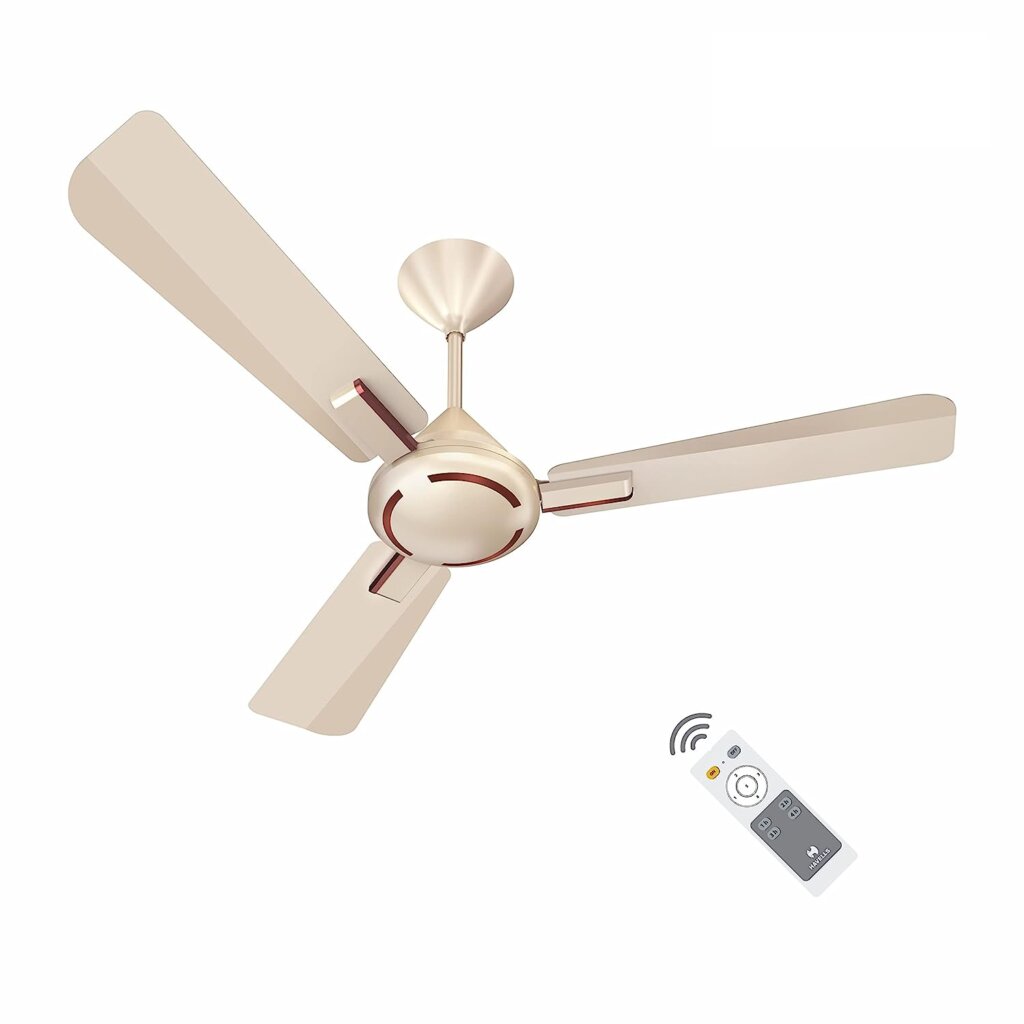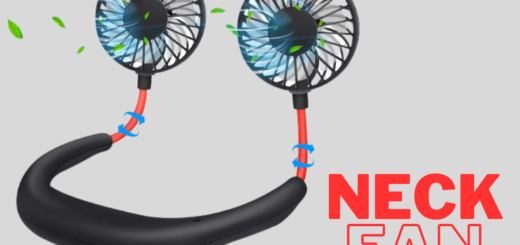Ceiling Fan: Your Go-to Cooling Solution

Ceiling fans are more than just fans. They are an integral part of a well-designed space. Whether it’s your living room, bedroom, or office, a ceiling fan is one of the easiest and most cost-effective ways to keep your space cool.
In this step-by-step guide, we will walk you through the ins and outs of choosing the right type, installing the right type, and keeping your fan running optimally.
Ready? Let’s get started!
Table of Contents
Optimizing Your Space with a Ceiling Fan
In the summer months, ceiling fans are an ideal way to keep your house cool. They not only keep your house cool, but they also bring a nice wind inside.
A decent ceiling fan can improve your life in a number of ways. The following are some of the most important advantages of a quality ceiling fan.
Energy Efficiency: fans consume significantly less energy than air conditioning systems, leading to reduced electricity bills and environmental impact.
Improved Air Circulation:fans promote better air circulation, preventing stuffiness and ensuring a fresh and comfortable indoor environment.
Year-Round Use: Many fans are designed with a reversible motor, allowing for both cooling and distributing warm air during colder months.
Aesthetic Appeal: fans come in a variety of styles, sizes, and finishes, serving as functional decor elements that complement your space.

Choosing the Perfect Ceiling Fan
Selecting the right fan requires careful consideration of various factors. From the room size to the blade material, each aspect plays a crucial role in determining the fan’s efficiency and performance.
Room Size and Fan Diameter
The size of your room directly impacts the choice of fan diameter. Use the following guidelines:
For rooms up to 75 square feet: Opt for a fan with a diameter of 29 to 36 inches.
For rooms up to 144 square feet: Choose a fan with a diameter of 36 to 42 inches.
For rooms up to 225 square feet: Consider a fan with a diameter of 44 inches.
For rooms up to 400 square feet: Select a fan with a diameter of 50 to 54 inches.
Blade Material and Design
Material and style of fan blades have an impact on both appearance and performance. Wood, metal and plastic fan blades are the most popular materials. Make sure you choose blades that match your home decor while also providing the best air circulation.
Ceiling Height and Mounting Options
Before purchasing a fan, consider the height of the ceiling. If the ceiling is high, you might want to consider using a longer down rod to keep the fan blades as close to the floor as possible. If the ceiling has a low ceiling, you might also want to consider an overhead flush ceiling fan (HUGGER) or an overhead hugger fan.
Motor Quality and Noise Level
A good motor will make your fan run smoothly and last a long time. Look out for fans with quiet motors, as they will cool you down quickly and won’t disturb the neighbors.
Installation: Making Your Ceiling Fan Dream a Reality
How to install a ceiling fan?
Ceiling fans are one of the most important pieces of furniture in your home. Installing a fan can be intimidating, but with proper tools and a few simple steps, you can install a fan with ease.
In this guide, we will walk you through the process of installing afan.
Gather Necessary Tools
Before you start, ensure you have the following tools:
Screwdriver set
Wire stripper
Voltage tester
Ladder or step stool
Turn off Power
Safety first! Turn off the power to the existing ceiling fixture from the circuit breaker to avoid any electrical hazards during installation.
Assemble the Fan
Carefully follow the manufacturer’s instructions to assemble the fan components, including attaching the blades and securing the light fixture (if applicable).
Attach Mounting Bracket
Secure the mounting bracket to the ceiling junction box using the provided screws. Ensure the bracket is level and stable.
Connect Wires
Carefully connect the fan wires to the corresponding wires in the ceiling junction box: black to black, white to white, and green or copper to the ground wire.
Secure the Fan
Lift the assembled fan and attach it to the mounting bracket using the provided hardware. Double-check all connections before turning the power back on.
Maintaining Your Ceiling Fan: Tips for Longevity
For your ceiling fan to continue operating at its best for years to come, proper maintenance is essential. Regular maintenance avoids the buildup of dust and ensures efficient performance.
Cleaning the Blades
Dust and dirt can accumulate on fan blades, affecting their performance. Use a soft cloth or a duster to clean the blades regularly.
Lubricating Moving Parts
Apply a small amount of lubricant to the motor’s moving parts, such as bearings and bushings, to prevent friction and noise.
Checking for Wobbling
If your fan wobbles excessively, it might be unbalanced. Use a balancing kit to adjust the blades and restore stability.
Conclusion
Maximize your living area with a fan that fits your style and comfort. We’ve got all the info you need on how to choose the right size fan and how to install it. Get more air flow, save energy, and look your best with a fan that’s perfect for your space.ace.
Here is the Top 5 Ceiling Fan according to customer review on amazon




Crompton SUREBREEZE HILLBRIZ 1200 mm (48 inch) Ceiling Fan (Brown) Star rated energy efficient fans
VIEW PRICE ON AMAZON

VIEW PRICE ON AMAZON
Also Read Ceiling Fan: Your Go-to Cooling Solution













